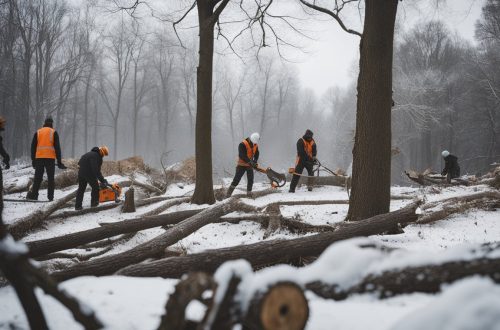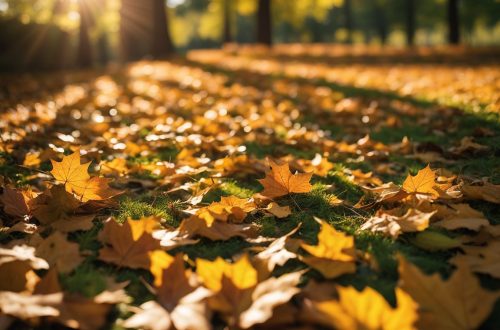Can You Seed and Fertilize at the Same Time?: Best Practices Revealed
Yes, you can seed and fertilize your lawn at the same time, but it requires careful selection of the right fertilizer. Seeding and fertilizing simultaneously should be done with precision to avoid damaging new seedlings.
Embarking on lawn maintenance can be a rewarding venture. Seeding and fertilizing are crucial steps in cultivating a lush, green lawn. While it’s generally safe to do both at once, the process demands certain considerations. Choosing a starter fertilizer with lower nitrogen content is essential to prevent burning the delicate new grass.
This integrated approach not only saves time but also encourages a more uniform growth pattern. Ensuring your soil is ready for this dual action can lead to a vibrant and healthy lawn. Proper timing, typically in the early fall or spring, is vital for optimal results. Utilize this method and watch as your lawn transforms into an inviting outdoor space.
Seeding And Fertilizing: A Dual Strategy
Seeding and fertilizing simultaneously can enhance lawn health. Grass seeds require nutrients to germinate effectively. Fertilizing provides these vital nutrients. Together, they support a lush, green lawn.
Yet, there are considerations to keep in mind. The right balance is crucial. Too much fertilizer can harm new seedlings. It’s essential to use the correct type of fertilizer and follow the recommended rates.
| Pros | Cons |
|---|---|
| Improved growth | Potential for over-fertilization |
| Better nutrient uptake | Risk of damaging seedlings |
| Time-saving | Need for precise application |

Credit: www.bakerlime.com
Soil Analysis Before You Start
Conducting a thorough soil analysis is a crucial first step. This process helps identify essential nutrient levels in your garden’s soil. Accurate nutrient data guides the fertilization process. Optimal seed growth relies on this information.
It is equally important to grasp the soil pH value. Soil pH affects nutrient availability. A pH test determines the need for soil amendments. This ensures a conducive environment for seeds. Both seeds and fertilizer perform best in properly balanced soil.
Choosing The Right Seed And Fertilizer
Choosing the right seed for your lawn demands attention to detail. Consider local climate, soil type, and sunlight exposure. Grass varieties like Kentucky Bluegrass or Bermuda thrive in different environments. Always select seeds that adapt well to your specific conditions for best growth.
Fertilizer types vary widely. Organic options enrich soil health over time, while synthetic fertilizers provide quick nutrient boosts. Use slow-release fertilizers to nourish young grasses without overwhelming them. It’s vital to match the fertilizer’s nutrient profile with your lawn’s needs. Balanced N-P-K ratios support overall lawn health and robust growth.

Credit: www.reddit.com
Timing Matters: When To Apply
Seeding and fertilizing should align with growth cycles. Spring offers ideal growth conditions for many grass types. It’s a time for recovery from winter stress. Fall is also suitable, especially for cool-season grasses. These grasses thrive in mild temperatures.
Warm-season grasses prefer late spring to early summer. This period matches their active growth phase. Always check local climate patterns before starting. Dry, mild days are best for application. Avoid days with heavy rain forecasts. Rain can wash away seeds and fertilizer.
Remember, the key is to ensure proper soil moisture. This gives seeds the best chance to germinate. Fertilizer needs to be absorbed effectively as well. Both processes require optimal weather conditions.
Application Techniques For Success
Achieving a lush lawn requires proper seeding and fertilization. For best results, these tasks should be done effectively. Ensuring even distribution is key.
Utilize a spreaders to apply seeds and fertilizer evenly. A drop spreader is great for precision, while a broadcast spreader covers large areas quickly. Remember, overlap passes slightly to prevent gaps or stripes.
For small patches, hand-seeding might be sufficient. Make sure to scatter seeds in a uniform manner for consistent growth.
Check the label on your fertilizer for specific spreader settings. This ensures the right amount is applied, fostering optimal growth without waste.
| Tool | Use Case |
|---|---|
| Drop Spreader | Precision in small to medium lawns |
| Broadcast Spreader | Efficiency in larger lawns |
| Hand-seeding | Control in small patches |
Watering After Seeding And Fertilizing
Proper irrigation is crucial after seeding and fertilizing your lawn. A gentle watering schedule ensures seed contact with the soil, enhancing germination. Aim for consistent moisture but avoid overwatering, as this can wash away seeds and nutrients. A light sprinkle multiple times a day promotes optimal growth.
To prevent common errors, don’t flood the area. Standing water can lead to seed rot. Using a timer for your sprinkler system can help maintain a regular watering routine. It’s essential to adjust your watering strategy based on weather conditions. Less water is needed on cloudy or rainy days, while more is essential during hot, dry spells.
Monitoring Growth And Health
Monitoring growth and health is vital after seeding and fertilizing. To track germination progress, observe the sprouting seeds daily. Look for uniform growth patterns across your lawn. Uneven areas may indicate issues with seed distribution or soil quality. Early signs of nutrient deficiency can show in plant color and leaf structure. Plants with yellowing leaves or stunted growth may lack essential nutrients. Use a soil test kit to confirm these deficiencies. Proper care ensures strong, healthy plant development.
Maintenance After Initial Application
Maintaining your lawn after seeding and fertilizing is crucial. Regular watering and mowing keep grass healthy. It’s important to follow a consistent lawn care routine. This includes monitoring the grass’s response to the initial treatment.
Over time, your lawn’s nutrient needs may change. Soil tests can help identify the required adjustments to your fertilization regimen. Seasonal variations often dictate the type and amount of fertilizer needed. A balanced approach ensures optimal growth and lawn health.
Common Questions Answered
Many believe you can’t seed and fertilize simultaneously; this is a myth. Proper timing and application make it possible. Homeowners often think that fertilizers may harm new seeds. Yet, specific fertilizers are designed to support seed growth. For best results, use a starter fertilizer and quality seeds. Read the instructions on both seed and fertilizer packaging. Follow them to ensure optimal growth.
Expert tips for homeowners include choosing the right season for seeding and fertilizing. Typically, early fall or spring is ideal. Soil testing is also crucial. It helps to identify nutrient needs. This ensures the correct fertilizer type is used. Aerate the soil before seeding. It improves fertilizer absorption and seed germination. Consistent watering after application is key to success.
Case Studies: Success Stories And Lessons Learned
Real-life lawn transformations often showcase the impact of simultaneous seeding and fertilization. One homeowner saw a lush, green lawn within weeks after combining both practices. They used a balanced starter fertilizer and high-quality seeds. Their consistent watering schedule played a crucial role as well.
Another gardener had different results. Their lawn struggled to thrive despite the same approach. It turns out, their soil’s pH was unsuitable. An upfront soil test could have prevented the mishap. This tale urges gardeners to test soil before starting.

Credit: www.youtube.com
Frequently Asked Questions
Is It Better To Seed Or Fertilize First?
It’s best to seed first, then apply fertilizer after the new grass establishes. This sequence encourages strong root growth for healthier turf.
Can You Seed And Fertilize The Same Day?
Yes, you can seed and fertilize your lawn on the same day. For best results, apply starter fertilizer before seeding to provide essential nutrients.
Should I Fertilize After Over Seeding?
Yes, fertilize after overseeding to provide new grass with essential nutrients. Use a starter fertilizer for best results and follow the manufacturer’s application guidelines.
Can I Put Down Grass Seed And Scott’s Turf Builder At The Same Time?
Yes, you can apply Scott’s Turf Builder and grass seed simultaneously for a healthier lawn. Follow label instructions for best results.
Conclusion
Seeding and fertilizing simultaneously can be effective with proper timing and technique. This approach, known as overseeding, rejuvenates lawns while promoting vigorous growth. Remember, success hinges on using quality products and adhering to best practices. For a lush, healthy lawn, combine these methods with care.
Your green space deserves it.




